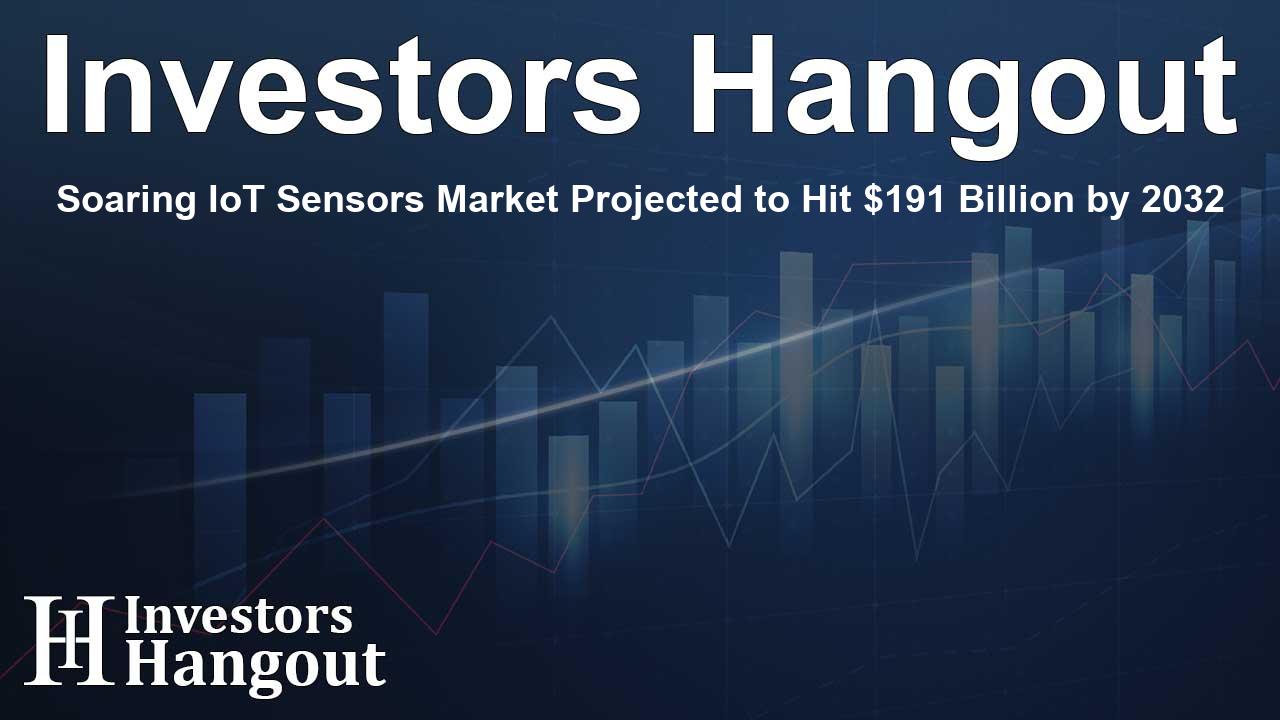Soaring IoT Sensors Market Projected to Hit $191 Billion by 2032

Growth Insights into the IoT Sensors Market
The IoT sensors market is booming, showing immense potential for growth and transformation. Recent reports suggest that this market was valued at USD 12.64 billion and is expected to skyrocket to USD 191.04 billion by the year 2032. This impressive growth represents a compound annual growth rate (CAGR) of 35.3% during the forecast period. Various sectors, including healthcare, automotive, and smart home technology, are leveraging IoT sensors to enhance functionality and efficiency.
Major Industry Players and Their Contributions
Leading the charge in the IoT sensors industry are numerous key players, including:
Texas Instruments
Known for their TI Temperature Sensors and TI mmWave Radar Sensors, Texas Instruments is instrumental in providing high-quality solutions that drive advancements in the sector.
TE Connectivity Corporation
Specializing in TE Pressure Sensors and TE Humidity Sensors, TE Connectivity is pivotal in various applications, ensuring connectivity and reliability.
STMicroelectronics
Their range of ST MEMS Motion Sensors and ST Environmental Sensors often leads innovation in smart technology and automation.
NXP Semiconductor N.V.
NXP's Smart Edge Sensors and UWB Positioning Sensors highlight their position in the market as leaders in smart technology applications.
Other notable players include Honeywell, Siemens AG, General Electric, and Bosch, each contributing unique products and solutions that enhance the functionality and responsiveness of IoT sensors across multiple industries.
Market Dynamics and Trends
Several driving forces fuel the growth of the IoT sensors market. Most importantly, the increasing integration of AI and edge computing technologies is transforming how data is processed, allowing for real-time insights, enhanced automation, and significant reductions in operational costs. The shift toward smart cities and significant infrastructure projects worldwide is further propelling demand for sophisticated IoT sensors.
For instance, with advancements in 5G networks and machine learning algorithms, AI-driven IoT sensors are becoming capable of supporting an array of applications such as autonomous vehicles and precision agriculture.
Segmentation of IoT Sensors Market by Type and End-Use
By Type
The motion sensors segment is notably dominant, commanding a 37% share of the total market revenue. This is attributed to their diverse applications spanning smart homes, healthcare, and automotive sectors. Innovative developments by leading companies such as Bosch and Murata are pivotal in creating increasingly sophisticated and effective sensors.
Additionally, the light sensors segment is quickly gaining momentum, projected to grow at a remarkable CAGR of 36.8%. This surge is driven by the growing need for energy-efficient lighting solutions across various sectors.
By End-Use
In terms of end-use, the consumer electronics segment is leading in market share due to rising demands for connected devices such as smartphones and wearables. The automotive and transportation sectors also exhibit substantial growth, spurred by trends such as the rise of autonomous vehicles and advanced driver assistance systems (ADAS).
Regional Analysis: North America vs. Asia Pacific
North America firmly holds the lead in the IoT sensors market, benefiting from robust infrastructure, high research and development investments, and widespread adoption in smart homes and industries. On the other hand, Asia Pacific is gaining traction as a fast-growing region, anticipated to experience a CAGR of 38%. This growth is fueled by urbanization and significant government initiatives aimed at boosting IoT adoption across industries.
Recent Developments and Innovations
Innovation in the sector remains alive and well, with companies like Texas Instruments pioneering AI-enhanced real-time MCUs that optimize predictive maintenance and power management in operational environments. The advancement of systems that come with integrated IoT platforms also points toward exciting developments in industrial monitoring and automation sectors.
Conclusion: Looking Ahead
As IoT technology continues to evolve, the growth of the IoT sensors market appears unstoppable. With rapid technological advancements and robust investments in research and development, businesses across the globe are gearing up to adopt these innovative solutions that promise enhanced operational efficiency, predictive abilities, and cost savings.
Frequently Asked Questions
What is the projected market size of IoT sensors by 2032?
The IoT sensors market is expected to reach USD 191.04 billion by 2032.
What is the CAGR for the IoT sensors market from 2024 to 2032?
The compound annual growth rate (CAGR) is projected at 35.3% for this period.
Who are the leading companies in the IoT sensors market?
Key companies include Texas Instruments, Honeywell, Bosch, and NXP Semiconductor, among others.
What factors are driving the growth of this market?
The integration of AI, edge computing, and the rise of smart cities are major drivers of growth.
Which segment of the IoT sensors market is growing the fastest?
The light sensors segment is projected to grow at the highest CAGR of 36.8%.
About The Author
Contact Addison Perry privately here. Or send an email with ATTN: Addison Perry as the subject to contact@investorshangout.com.
About Investors Hangout
Investors Hangout is a leading online stock forum for financial discussion and learning, offering a wide range of free tools and resources. It draws in traders of all levels, who exchange market knowledge, investigate trading tactics, and keep an eye on industry developments in real time. Featuring financial articles, stock message boards, quotes, charts, company profiles, and live news updates. Through cooperative learning and a wealth of informational resources, it helps users from novices creating their first portfolios to experts honing their techniques. Join Investors Hangout today: https://investorshangout.com/
The content of this article is based on factual, publicly available information and does not represent legal, financial, or investment advice. Investors Hangout does not offer financial advice, and the author is not a licensed financial advisor. Consult a qualified advisor before making any financial or investment decisions based on this article. This article should not be considered advice to purchase, sell, or hold any securities or other investments. If any of the material provided here is inaccurate, please contact us for corrections.
